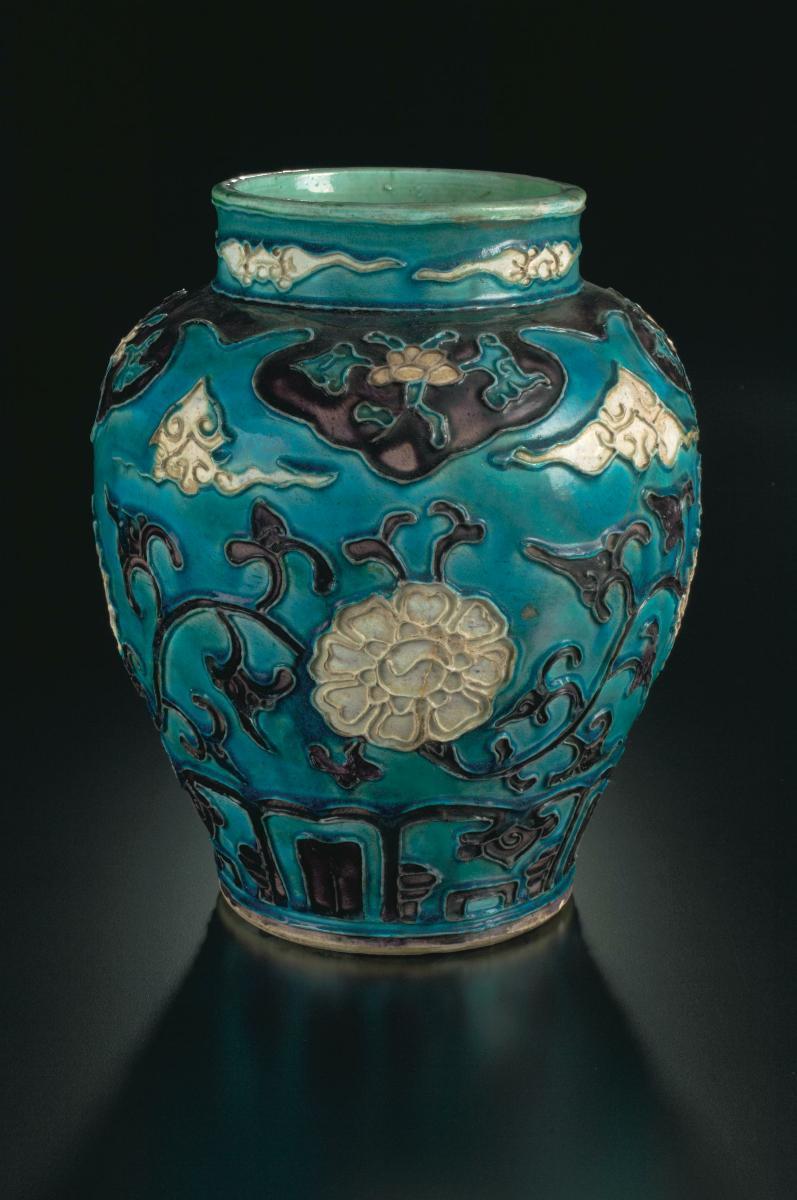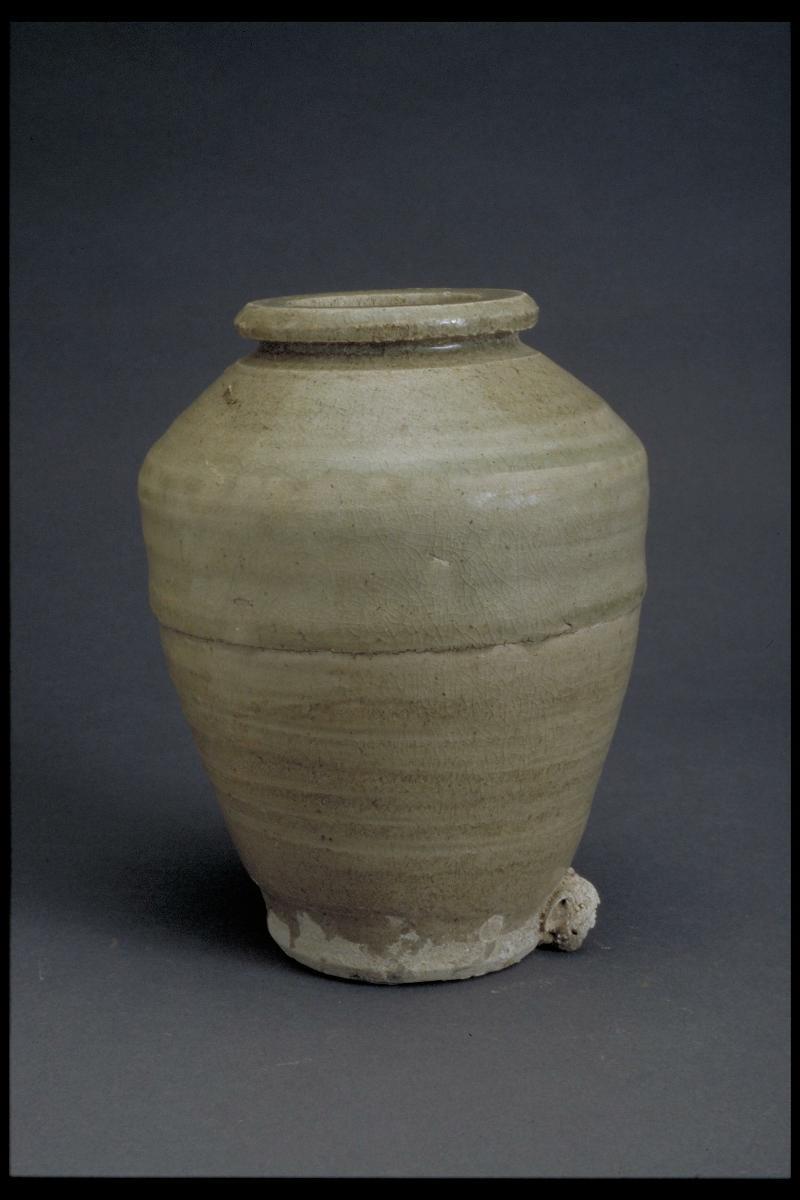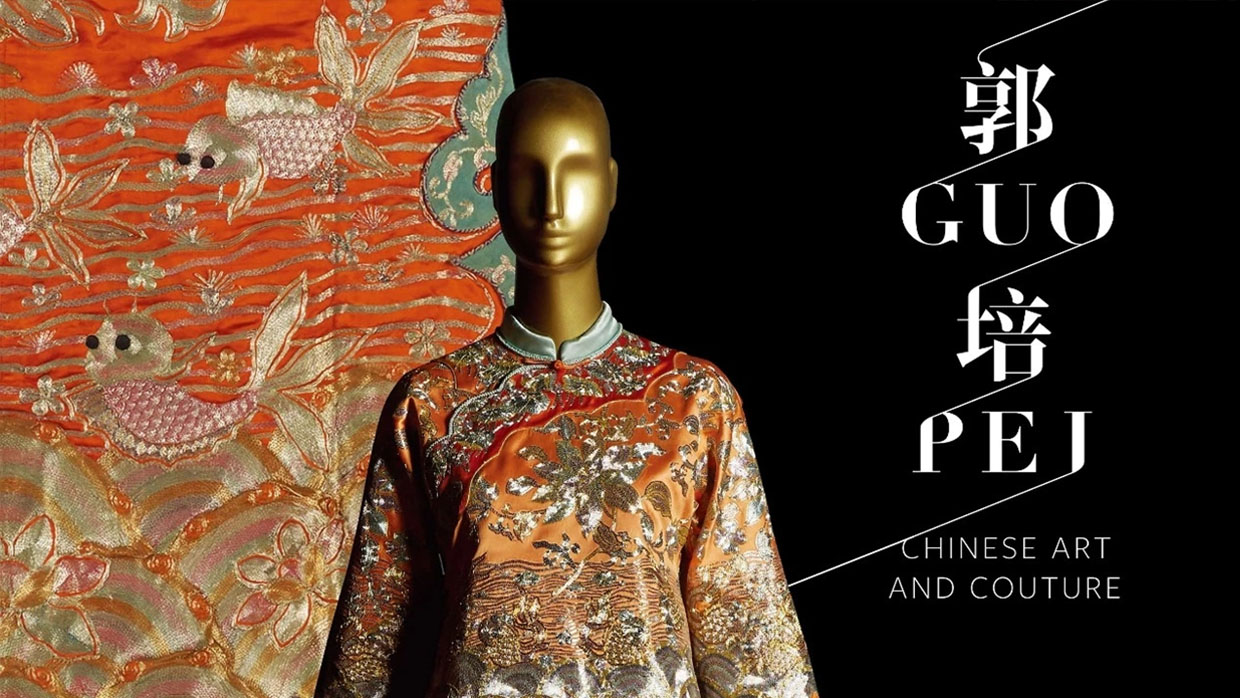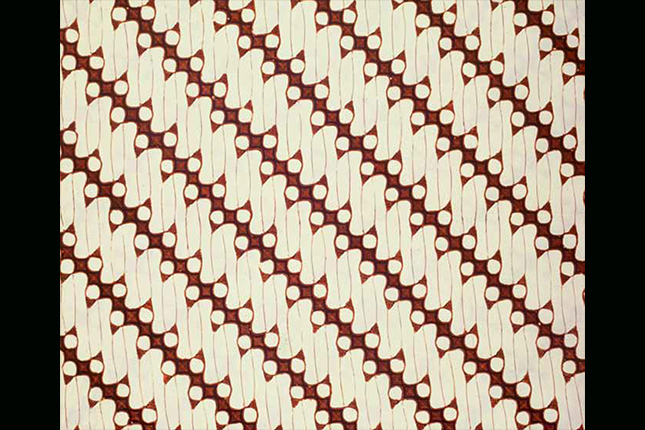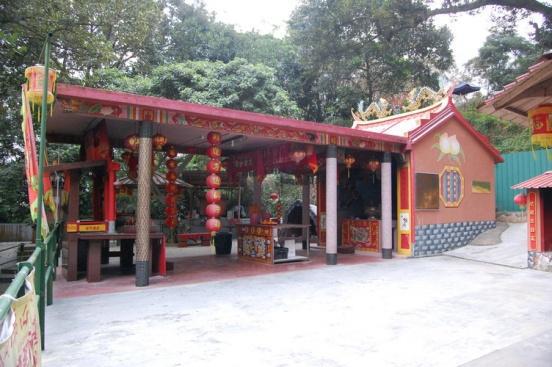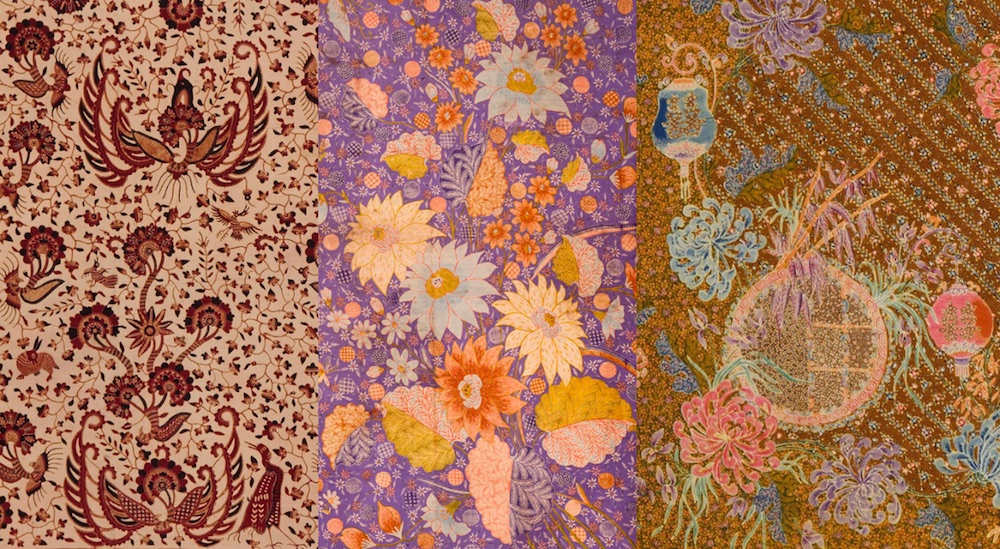This thickly potted fahua-style porcelain jar has a narrow neck, curved shoulders and a cylindrical body with a rounded base. The relief decorations are filled with alkaline-lead glazes of aubergine, turquoise and white. It is finished with a light green glaze inside.'Fahua' ('designs with boundaries') ceramics refers to alkaline-based earthenware decorated with polychrome enamel colours applied between threads of clay or slip. This style is similar to the cloisonné technique, where coloured enamels are separated by copper wire. The enamels usually include green, deep blue, turquoise, aubergine, and amber yellow. In some decorations, instead of raised reliefs, the patterns are incised to which coloured enamels are added.Fahua wares have been produced since the 14th century in the north in Shanxi, during the Yuan dynasty (1279-1368), and in the south at Jingdezhen during the 15th century. The alkaline glazes of fahua wares were mainly used for large wares such garden seats, vases, wine jars and religious ceramics and burial figures during the Ming (1368-1644) and Qing (1644-1911) dynasties.




